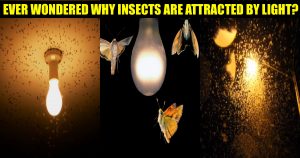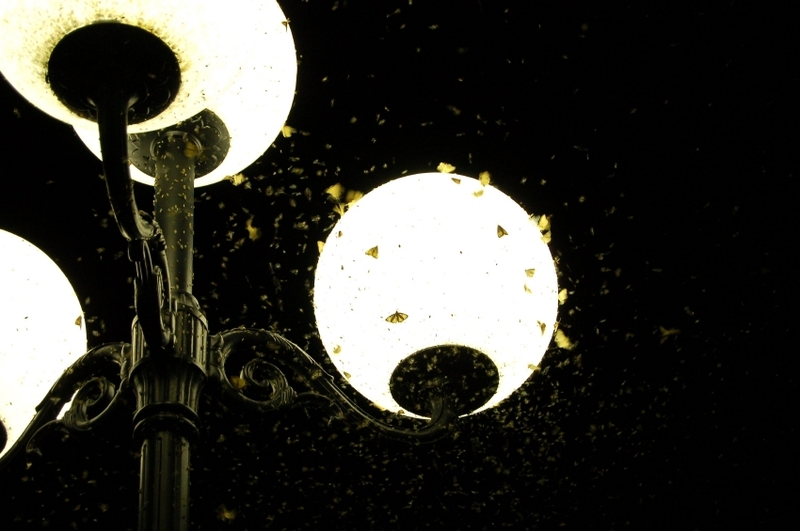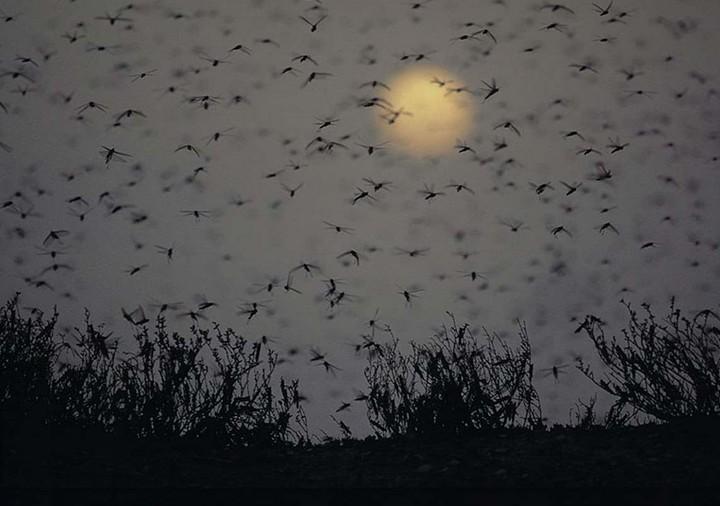
Why Are Some Insects Attracted Towards Light? Here Is The Reason
The old saying “like a moth to a flame” describes someone with an unswerving yet self-destructive attraction. We all know that bugs are even worse at night when the street lamps come on or the front porch light. So why are bugs attracted to light?
Unfortunately, scientists haven’t been able to pin down one simple explanation for this behavior in moths, flies, and many other insects. They have, however, developed several theories that might provide some insight into why certain insects seem to be attracted to lights.

A phenomenon called phototaxis explains how organisms respond to light with motion. Some entomologists believe moths zoom toward unnatural light sources because the lights throw off their internal navigation systems. Moths didn’t evolve around bright lights, after all; they evolved at a time when all the light on Earth came solely from the distant sun, moon, and stars.
But around man-made lights, such as a campfire or your porch light, the angle to the light source changes as a moth flies by. This confuses it. “The thinking is that they become dazzled by the light and are somehow attracted,” said Jerry Powell, an entomologist at the University of California, Berkeley, who specializes in moths.

“It’s kind of complicated, but bugs need a little bit of light in order to navigate. They need fixed light points,” said Mike McLean of the Metropolitan Mosquito Control District.
Not all insects that are attracted to light act on those impulses. For some, a bright light source is seen as an emergency beacon, and when in doubt, they will instinctively head for the light, which is generally higher than their current danger-filled position. Some insects, like cockroaches, are negatively phototactic and they will scurry away when the light comes on.
Insects Use Moon Light For Navigation:
Nocturnal insects such as most moths evolved to use natural light sources such as the moon or stars in order to navigate. These insects navigate by keeping themselves aligned at a certain angle relative to a light source.

Since the moon is so far away, the angle stays the same as the insect flies along, but this isn’t the case with smaller light sources such as a candle flame or light bulb. This is because the angle to the light source changes as the insect passes the source, so in an attempt to keep themselves aligned the insect ends up flying round in circles. The entire situation is, no doubt, very confusing for the poor little things.
Unobstructed Light Source:

Another idea is that seeing an unobstructed light source indicates that the pathway is clear, therefore the insects fly directly towards it in an attempt to avoid obstacles. This could explain why some insects seem to kamikaze right into light bulbs.
Mistake Light Source For Female Moths:
Another theory says that moths actually mistake certain light sources for female moths. While this may sound quite bizarre, it was discovered that the infrared light spectrum is given off by candle flames actually has a few common frequencies with the light given off by the pheromones of female moths.

Male moths may, therefore, dive into a candle flame because they mistook it for a female looking for a mate. Unfortunately for them, instead of getting lucky they end up burnt to death.

We would like to hear from you. We will be thankful if you add an extra piece of information. Do share your valuable info in the comment section below.